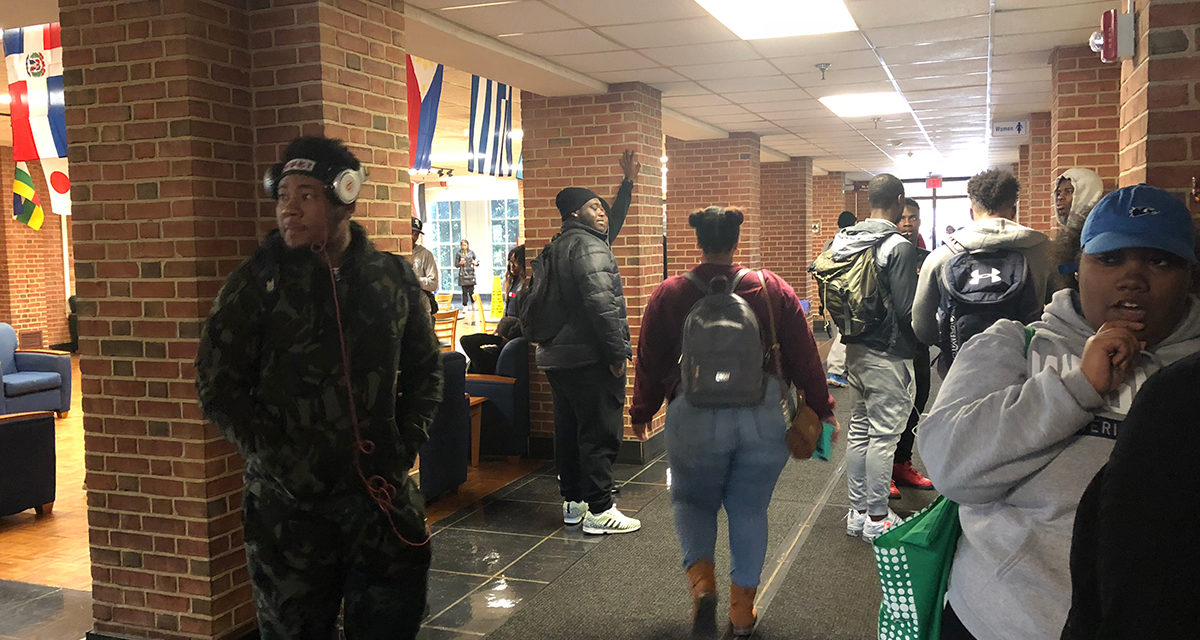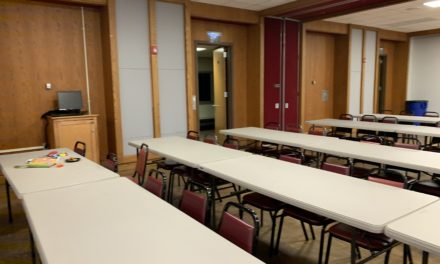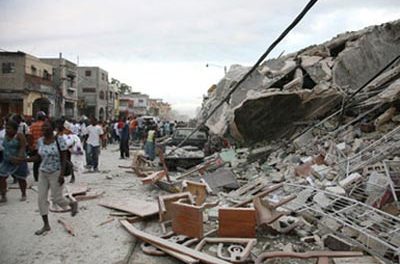By Joyrenzia Cheatham, Christian Bailey, Kierra Whitaker and Zahra Marcus, The Whetstone
Most Wesley College students say they have reasons why they don’t interact with people who don’t look like them.
“There is no diversity, students automatically segregate themselves,†said senior Breanne Smith, who is black, “Everybody has a choice to go to all events whether it is hosted by a predominantly black or predominantly white organization, but people choose to go to their specific race’s event.â€
“The events that are divided by race could be because of the types of things that are going on at the events,” said freshman Jenna Burchfield, who is white. “For example, the sorority and fraternity events are composed more of whites because those are the people that are a part of those groups.”
Wesley is almost evenly divided between black and white students, with only a handful of Hispanics and Asians.
Events, parties, hanging out in College Center also seem as divided as the statistics.
Provost Jeffrey Gibson said Wesley is a minority serving institution because the student population is made up of more than 50 percent non-white students.
Black Student Union vice president Laurelyn Richardson said she notices the divide between students not only at events, but on the campus as a whole.
“I definitely have noticed blatant segregation on this campus as far as events and even overall on this campus,†said Richardson, who is white. “You don’t see all different types of people mixing at events or even coming to certain events for whatever reason(s) they may have.”
Although black students seem to notice the division more, many whites and others say they are aware.
“The school is diverse but as students we are segregated,†said Edward Brandenburg, who is white. “You can tell which organizations and events are dominated by black or white.â€
“As a population we are not diverse,†said Momina Toseef, who is Pakistani. “But at the same time there is a push for organizations to be diverse. I do not believe Wesley is diverse yet.â€
Senior Julianna Tedder, who is white, said she has noticed the division of black and white students on campus.
“It is very subtle,†she said.
Senior Luis Arteaga, who is Hispanic, said Wesley is diverse.
“However, I believe Wesley does not use it to their advantage,†he said. “They host many events but they always seem to be segregated. Pretty much we don’t know how to interact with each other.â€
Senior Jason Showers, who is Korean and black, said the division is awkward.
“It seems like all of the black people hang out,†he said. “White people are not really there at open gym where we play basketball or SAB events.â€
Senior Jamal Earls, who is black, said the college and students need to work harder.
“Events could be more diverse,†he said. “The majority of events are attended by African-Americans.â€
Black Student Union President Rex Chege, who is black, said that the racial divide is noticeable.
“The biggest issue is trying to include everyone in events,†he said. “If every time we have an event, it’s mainly black and it is reoccurring, it is a problem.â€
He said everyone is welcome in BSU.
“Our vice president (who is white) is one example,†he said. “We are all about inclusiveness and it is harder to get white people at our events because they think it is just for black people.â€
Why Do People Divide Themselves?
Psychology professor Angela D’Antonio said it’s natural for people to hang out with others of the same background.
“People tend to gravitate more to people who are like them,†she said.
She also said it is about self-awareness and social tendencies.
“Social tendencies get us in trouble if we stay in the groups we are known for,†she said. “There could be awkwardness because we are all different. People get afraid that they may seem racist. That is why they avoid it.â€
Tedder said black students are welcome in De La Warr, the history society.
“Students of color are no longer in the organization,†she said. “Some left to focus on school or personal reasons.â€
SAB President Jeanerre Smith, who is black, said she wants everyone to know that they can come together and be comfortable at any SAB event.
“We have to learn how to be among each other,” she said.
She said she has noticed a lack of diversity at SAB events.
“A majority of African American students attend,” she said. “Our events are for all the students at Wesley College, so I would like to see everyone attend. We are here for everyone to have a good time.”
Smith doesn’t want people to feel like SAB isn’t an organization for everyone just because there is an all-black-female board.
Black Faculty Are Few
Charlisa Edelin, Associate Professor of Law and Justice, is one of only five full-time black professors at Wesley. Black professors make up about 7 percent of the full-time faculty.
“I have been treated very well since I have been at Wesley,†she said.
Edelin said she has noticed the division between students.
“I try to get out to student events regularly,†she said. “I have been to fashion shows and lacrosse games and I noticed that those events are quite segregated. Most of the social events are almost always black and it does concern me that there is not a lot of social events that black and white students go to.â€
Dr. Kathleen Jacobs has worked full time at Wesley since 1987. She said that Wesley has gained more minorities over time. When she first started at Wesley in 1985 there were only a few black students on campus.
She believes Wesley is making progress but it is slow.
“Wesley has improved with minorities from staff to students,” she said. “I am so happy that the student body has gotten more diverse. The business department in very diverse. I have a nice mixture in my class.”
She said there were fewer minority faculty members because of the requirements that are needed to become a professor.
“It all starts from education,†she said. “You have to gain a doctorate degree, which is very costly, that comes with the type of income you have. Not a lot of minorities earn that degree.”
Being one of the five black full-time faculty members doesn’t bother Jacobs.
“I look at it like collegiality,” she said.
Racism At Wesley?
Some students said they have experienced racism at Wesley.
Junior Najee Segar, who is black, said she faced racial discrimination her freshman year.
“I went to a party some Wesley students were hosting at one of the sports team houses and they tried to kick me and my friends out because we weren’t white,” she said.
Other students said they have had issues with the sport houses as well.
“They are always kicking black students out,” said senior Corey Johnson, who is black. “Or they say it’s full but will let five white people walk in right after.”
Jason Showers said he tried to attend a party at the lacrosse house.
“They turned me away saying there was no space but people kept coming out and they allowed white guys to go in,†he said. “It didn’t bother or surprise me. I didn’t even argue with them because I have heard similar stories before.â€
Bruce Moses, who is black, said he was disrespected at a lacrosse party.
“One kid bumped into me at the lacrosse house trying to push me out of the way and didn’t say excuse me nor acknowledge me when I first approached him about it,†he said. “Because of my skin tone they think they can disrespect me, I don’t approve of thatâ€
Lacrosse player Shelby Schirmer said anyone is welcome to lacrosse parties.
“I don’t care,†she said. “The boys say anyone can come.â€
Schirmer, who is white, said that the football players cause problems.
“One white football player came to a party and broke a window,†she said. “They put all of the football players in one group. People make that out to be racist because most of the (football) team is black. Even basketball players have come. It is more of the people manning the doors that have different values.â€
Schirmer said her own white friends have damaged the house.
“People do not know how to act,†she said “We usually do not kick people out until the police show up.â€
Edelin said some of her students had experiences at off campus parties as well.
“I took a group of students to Washington D.C., and a white student asked a black student why she was not at a party,†she said. “The black student said you know black people cannot go to those types of parties and the white student was surprised.â€
She said the black student explained there were certain parties off-campus held by white students and they don’t like or allow black people to attend.
“I almost pulled that van over,†Edelin said. “We had a 30-minute conversation and I think it was eye-opening for both races. As a professor I almost cried. I think we have to have those conversations.â€
Dr. Jeffrey Mask, professor of Religion and Philosophy, said he thinks Wesley has a “binary ethnic diversity.â€
“There is diversity in our student body in some ways more than others,†he said. “I do not think we are diverse religiously.â€
He also said that diversity is an issue because racism is a problem.
“A lot of people are in denial about it,†he said. “We need to talk and listen to each other more and better in order to be able to accept and celebrate our differences.â€
Sports Teams Also Show Racial Divisions
Diversity has impacted different sports teams at Wesley. Some teams are stereotypically white or black, but most of the players say it doesn’t matter.
About 85 percent of the baseball and softball teams are white, while 83 percent of the football team is black and 78 percent of the men’s basketball team is black. While 100 percent of the field hockey team is white, 65 percent of the women’s basketball team is black. The women’s lacrosse team is nearly 80 percent white, while the men’s lacrosse team is about 90 percent white.
No one seems to know why they are so racially divided.
Director of Athletics Michael Drass said sports teams recruit within a 2-hour radius of Wesley College.
“The coaches visit high schools and talk with high school coaches and their seniors,†he said. “Or they go to competitions during the summer months to see the student-athletes compete.â€
Wesley focuses mostly on New Jersey, southeastern Pennsylvania, Delaware and Maryland and northern Virginia when recruiting for football.
Steve Azzanesi, associate director of promotions for football, said race is not a factor for football in the recruiting process.
“We recruit talented players based on Hudl evaluation (a website where players can upload their highlight video) and possibly seeing them at a camp,” he said. “We look for players that are good people based on their high school coach and anyone else we can talk to at the school’s recommendation and our evaluation of how the prospect carries himself.”
Senior Alex Kemp, who is black, said the football team gets along fine. Off the field, they separate.
“The black people hang out with black people, and white people hang out with white people, but all together we are all cool,†he said.
Dean Burrows, head coach of the men’s basketball team, said recruiters go above and beyond to recruit players.
“We try and find the student-athlete who truly wants to be a part of what we are doing in regard to our program and who truly wants to be at Wesley, because it’s not for everyone,†he said. “This past season, we had young men from Delaware, Pennsylvania, Maryland, New Jersey, Florida, England, and St. Lucia on our roster.â€
Christopher Dearth, vice president of enrollment management, said recruiting a student-athlete is no different from any other student.
“We have a comprehensive recruitment plan that covers most of the Mid-Atlantic Region,†he said. “We attend college fairs and conduct high school visits at schools in Delaware, Maryland, New Jersey, New York, Virginia, Connecticut and Pennsylvania.â€
Senior J.W. Lawson, who is black, said the men’s basketball team is diverse.
Eleven of 14 on the team are black.
“We are always together, we hang out on and off the court,†he said. “If I am not with my teammates, I am normally by myself.â€
Evan Anderson, who is black and white, said the team is a family.
“We are all brought together on the court as one family,†he said. “We are all treated equally and coach loves that we have that ‘brotherhood’ mentality with each other.â€
Senior George Cook, who is black, said the team has many backgrounds.
“A lot of us hang out on and off the court, regardless of race,†he said. “Some of our coaches are black, some of our coaches are white. It does not really matter. They do a lot for us.â€
Senior Maura Binkley, who is both black and white, said the women’s basketball team is more diverse now than it was before.
Seven of 10 on the team are black.
“We are a close-knit group of girls and really never mattered anyone’s differences,†she said. “We accept each other no matter where anyone come from or what they look like.â€
Senior DaJahn Lowery said the track team is diverse.
“I know our coach does not pay attention to skin color, he is all about the athlete in a person,†he said. “Everybody really bonds with each other. Off the track we all talk to each other. We have more of a mix on the track team than the football team.â€




